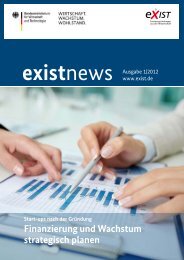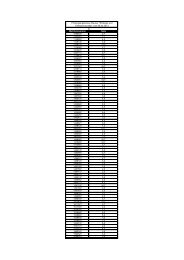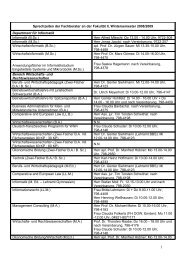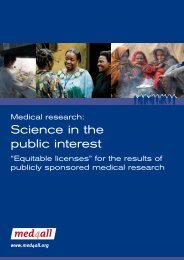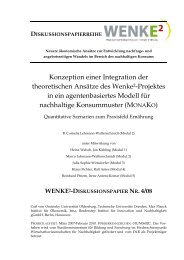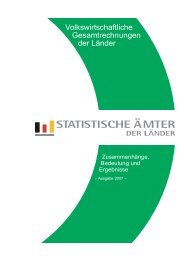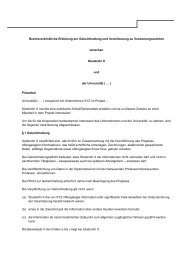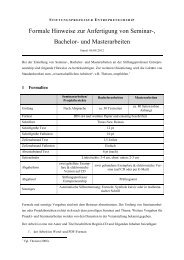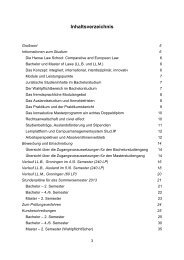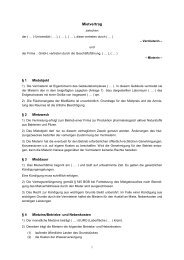Pro-Environmental Behavior and Rational Consumer Choice
Pro-Environmental Behavior and Rational Consumer Choice
Pro-Environmental Behavior and Rational Consumer Choice
Create successful ePaper yourself
Turn your PDF publications into a flip-book with our unique Google optimized e-Paper software.
<strong>Pro</strong>-<strong>Environmental</strong> <strong>Behavior</strong> <strong>and</strong> <strong>Rational</strong> <strong>Consumer</strong> <strong>Choice</strong> 14<br />
of attitudes (pro-environment attitude, materialistic attitude) on the other h<strong>and</strong>. Attitude<br />
indicators are included because attitudes may simultaneously influence life satisfaction <strong>and</strong><br />
pro-environment behaviors, such that their omission leads to biased estimates. In this<br />
sense, controlling for attitudes is an approximation to using individual fixed effects (which<br />
would be the preferred strategy in a sample with panel structure). 15 In addition, equation<br />
(4) will be augmented to include interactions between pro-environment behaviors <strong>and</strong><br />
individual <strong>and</strong> societal conditions. Such interactions permit to check whether, if at all,<br />
distorted choice is linked to attitudinal <strong>and</strong> cognitive conditions.<br />
The model from equation (4) will be estimated by means of an ordered probit maximum<br />
likelihood estimator.<br />
3.2 The Data Base<br />
This paper uses data from the World Values Surveys (WVS). The WVS were conducted in<br />
four waves (1981-1984, 1989-1993, 1994-1999 <strong>and</strong> 2000-2004), involving 267.870<br />
individuals in 84 countries, both developed <strong>and</strong> developing. 16 They include, especially,<br />
information on demographic characteristics <strong>and</strong> self-rated life satisfaction (as stated in the<br />
question quoted above). In addition, the third wave of the WVS includes the following<br />
questions concerning environment-friendly consumption:<br />
“Which, if any, of these things have you done in the last 12 months, out of concern for the<br />
environment?<br />
• Have you chosen household products that you think are better for the environment?<br />
• Have you decided for environmental reasons to reuse or recycle something rather<br />
than throw it away?<br />
• Have you tried to reduce water consumption for environmental reasons?”<br />
For each of these items (which we label Green<strong>Pro</strong>ducts, Recycling, WaterConservation)<br />
respondents can answer “have not” (0), “have done” (1). 17<br />
These three items constitute our indicators of pro-environment consumption. 18 The<br />
corresponding indicators of environmental friendliness at the societal level (labeled QSoc)<br />
are the percentages of respondents (by country <strong>and</strong> year) who have answered “have done”.<br />
15<br />
We believe that omission of common determinants of life satisfaction <strong>and</strong> pro-environmental behaviors is<br />
the main source of potential estimation bias. Important common determinants may be personality traits. Since<br />
these traits are unobserved, we try to proxy them by indicators of attitudes which may be thought to affect<br />
both life satisfaction <strong>and</strong> pro-environmental behaviors. By controlling for these determinants of life<br />
satisfaction, we account for endogeneity in the sense that people who are more satisfied due to these factors<br />
may be more inclined towards pro-environmental behavior.<br />
16<br />
See The European Values Study Foundation <strong>and</strong> World Values Survey Association, European <strong>and</strong> World<br />
Values Surveys four-wave integrated data file, 1981-2004, v.20060423, 2006, Aggregate File <strong>Pro</strong>ducers:<br />
ASEP/JDS, Madrid, Spain/Tilburg University, Tilburg, the Netherl<strong>and</strong>s. Aggregate File Distributors:<br />
ASEP/JDS <strong>and</strong> ZA, Cologne, Germany.<br />
17<br />
Additional categories in the data base are “don’t know“, “no answer“, “not applicable“, “not asked in<br />
survey“, <strong>and</strong> “missing; unknown“. Answers falling in these categories were omitted.<br />
18<br />
The circumstance that these indicators are binary variables does not affect the logic that a non-vanishing<br />
coefficient indicates a failure to maximize (experienced) utility: A positive [negative] coefficient<br />
β ≡ Δu<br />
/ Δq<br />
≡ Δu<br />
/ q implies that an individual who chooses (q = 0, X(y, q = 0)) [(q = 1, X(y, q = 1))]




